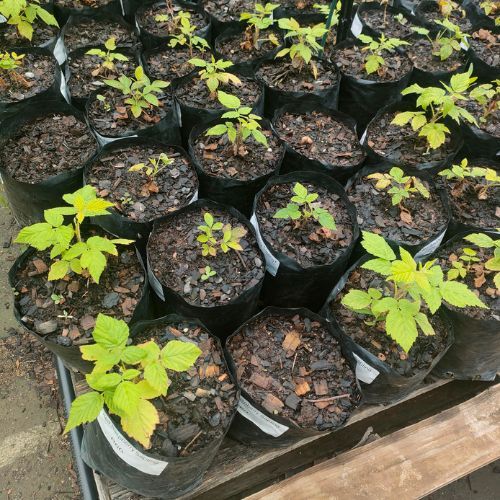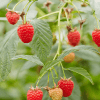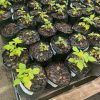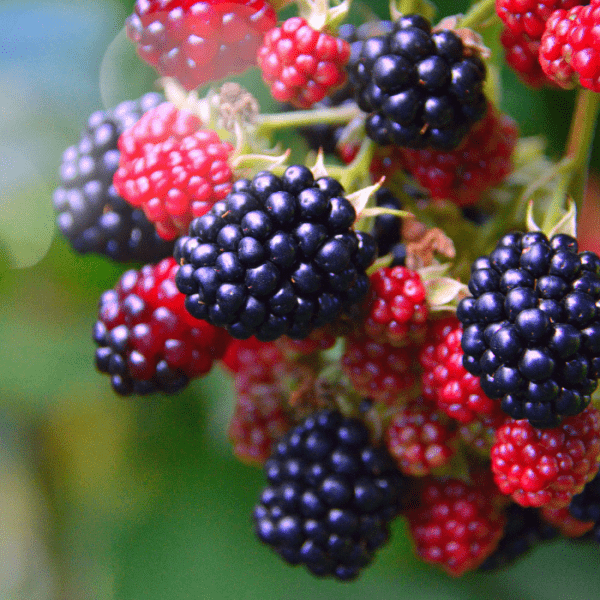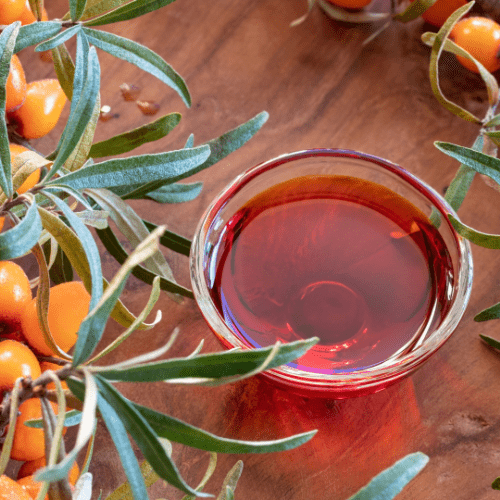Position
Raspberry plants thrive in full sun (about 6 to 8 hours of direct sunlight daily). But, it tolerates partial shade and freezing temperatures when necessary. Plant in a spot as protected from the wind as possible. It grows well on a trellis or a fence since it’s a bramble. Each bush should have at least 1 metre around it to spread comfortably, and rows of brambles should have about 3 metres between them.
Size
This bush grows to a height of between 90 and 150 centimetres, and stretches 60 to 90 centimetres in width.
Soil
Plant your red raspberry bramble in slightly acidic soil with a pH of 5.8 and 6.8. See our page Red Raspberry with soils
Your soil must be fertile and drain well, retaining enough moisture for your plant to thrive. Keep weeds away.
Dig a 50cm x 50cm deep hole and add a bag of compost or acid compost. Mix the berry mix and Volcanic rock dust into the top section of this soil. Make a little hole and plant, ensuring you don’t plant higher than where the soil is in the bag. Then add the pine bark mulch on top, keeping it away from the plant’s stem. Place the plant directly into the soil mixture and cover it with pine bark mulch.
Volcanic rock dust, contains organic minerals and trace elements to boost soil health and increase important micro-organisms essential for healthy soil.
Mulch
Apply a layer of organic mulch around the base of the plant to retain moisture, suppress weeds, and regulate soil temperature. Keep the mulch away from the stem. Pine bark or pine needles make excellent mulch because they lower the pH and add nutrients to the soil.
Watering
This bramble needs plenty of water, especially during hot weather. In general, you can water your plants twice a week. If the weather is hot and dry, water them daily. Avoid wetting the stems and leaves too much to prevent them from rotting.
Fertilising
Use our slow-release berry fertiliser twice a year – once in spring and once in summer. When planting, use between 5 and 15 centimetres of mulch to boost the soil.
Pruning
In the winter, prune back the canes that bore fruit in the summer to promote new growth and keep your bramble tidy. After the last summer harvest, promptly remove the old stems at the soil level.
Harvesting
Raspberries are ready for harvesting when fully ripe and easily come off the plant when gently tugged. Harvest regularly to ensure you pick them at their peak flavour and quality.


